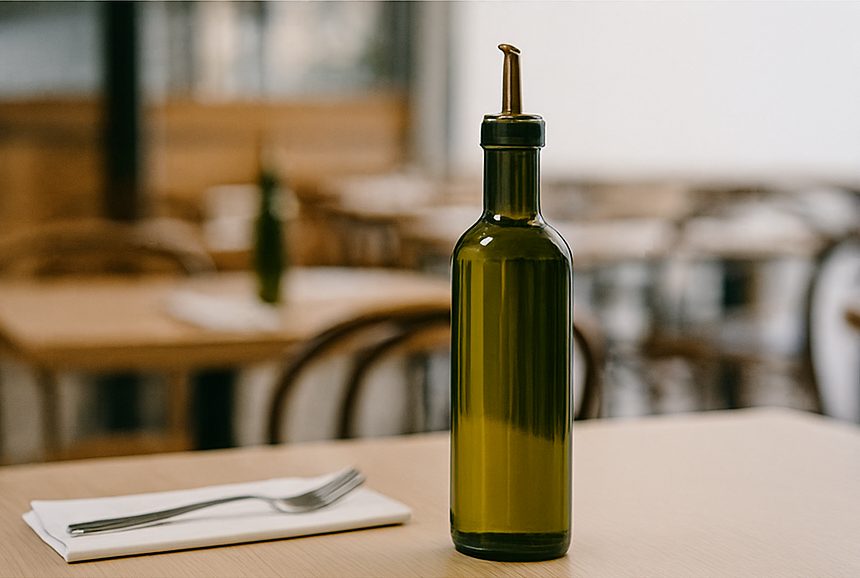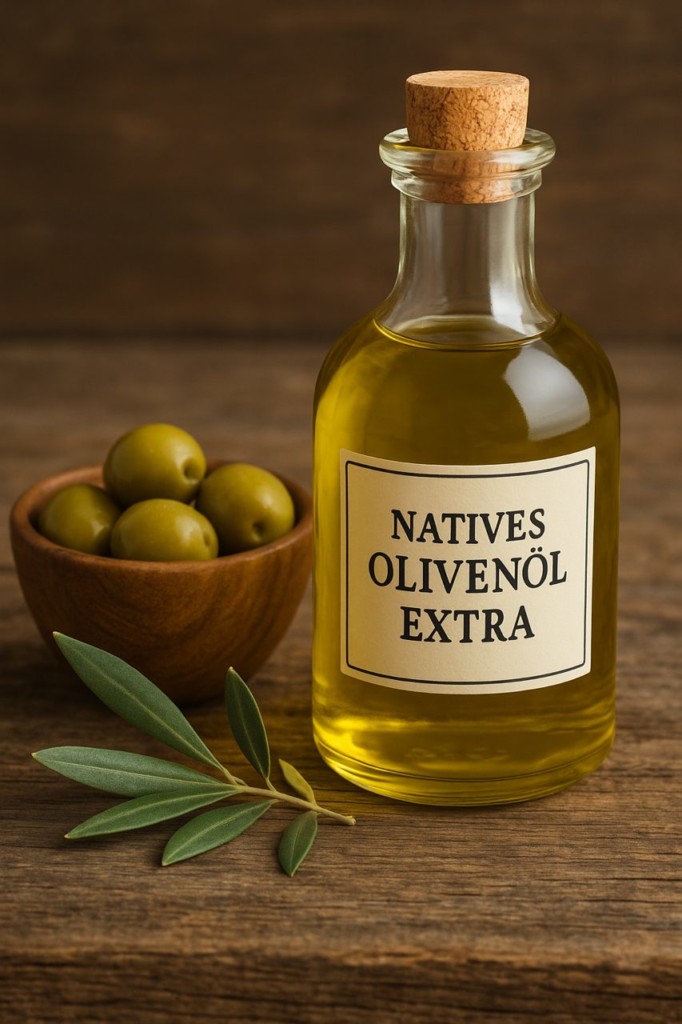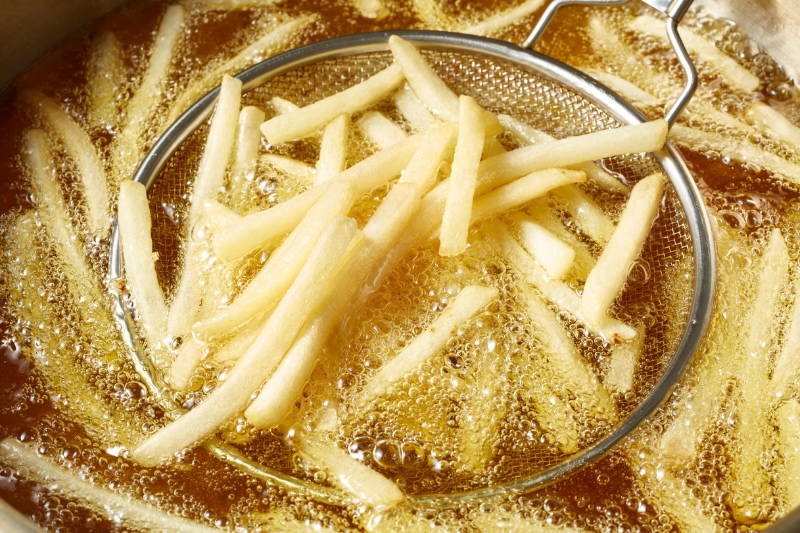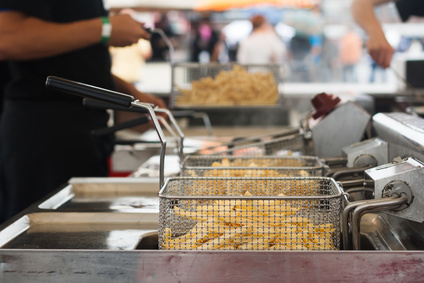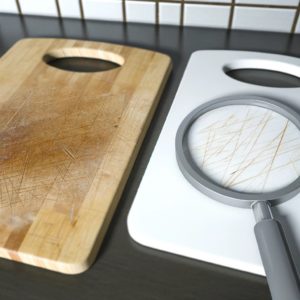
The question of which material is more hygienic for chopping boards, wood or plastic, is discussed time and again. Plastic can be cleaned in the dishwasher at very hot temperatures, but according to a study, wood also has an antibacterial effect and is therefore a good and natural alternative.
Hygiene requirements
Strict guidelines apply to businesses in the food industry regarding the cleaning and disinfection of work surfaces and equipment in the kitchen. These must be made of materials that are smooth, abrasion-resistant, corrosion-resistant and non-toxic. In addition, regular cleaning and, if necessary, disinfection must be possible to prevent contamination (see Swiss Hygiene Ordinance HyV Art. 13 a.). Against this background, the use of wood materials in food hygiene is often viewed critically and is rarely used in professional kitchen environments.
But which material is recommended by experts and which chopping boards are easier to clean and therefore less of a germ trap?
The Federal Risk Assessment Authority’s assessment highlights plastic cutting boards as the preferred working material due to their ability to withstand high temperatures in the dishwasher, making them more advantageous for hygienic purposes.
Plastic chopping boards can always be thermally disinfected in the dishwasher (temperatures above 80°C) to keep them hygienically clean, but wooden boards are not as bad as their reputation. Research, including by the Federal Biological Institute in Braunschweig, the German Institute of Food Technology and studies evaluated by the Competence Center for Home Economics (KoHW), confirm the antibacterial effect of wood. This is due to the tannins (tannic acids) and polyphenols in wood species such as pine, spruce, maple and beech and the hygroscopic (moisture-attracting) properties of the wood, which deprive bacteria of the moisture they need to survive.
Cleaning wooden chopping boards correctly
Unfortunately, the antibacterial effect in the wood does not last forever and despite the antibacterial effect, the wooden boards still need to be cleaned after use.
After processing strong-smelling or particularly coloring foods, the cutting boards should be
- rinsed immediately under cold water and then
- rinsed with water at a temperature of around 60 degrees.
For effective germ control
- For effective germ control, the wood should then be cleaned in the direction of the grain with vinegar and detergent and
- brushed with soda or table salt.
- Treat dry wooden boards with neutral cooking oil, such as rapeseed or sunflower oil, to prevent them from becoming brittle.
Otherwise, germs could be deposited in fissured wooden boards or small splinters of wood could fall off, which in turn could get into the food.
In general, chopping boards should be sanded down at regular intervals so that the surface is smooth and easy to clean again and discoloration disappears.
Clean plastic chopping boards correctly
Plastic boards are best cleaned
- at high temperatures (> 80°C) in the dishwasher.
This effectively kills all bacteria. Nevertheless, even plastic cutting boards must not have too deep cuts. The cutting boards no longer dry out properly in the deep cuts, which harbors the risk of bacteria accumulating and multiplying there.
This means that there is no guarantee that plastic chopping boards are germ-free, even after a dishwashing cycle at high temperatures.
Plastic boards should therefore also be sanded at regular intervals. The top layer on the cutting board is removed with a scraper so that the cuts disappear and germs no longer have a chance.
Separation of the cutting boards
It is generally advisable to use different chopping boards for certain product groups. In this way, contamination can be reduced from the outset. Plastic chopping boards in different colors are very often used in the catering industry. For example, red cutting boards are used for red meat, blue for fish and yellow for poultry. White chopping boards could, for example, only be used for cooked food and green ones for vegetables. This prevents bacteria such as salmonella from getting onto salad from raw poultry meat.
Discolored cutting boards
Discolored cutting boards, for example due to food such as beet or red cabbage, can be cleaned very simply with a mixture of lemon juice and baking soda. Discoloration caused by tomato juice can even be bleached out again with sunlight.
Storage of the cutting boards
After cleaning, chopping boards should always be allowed to dry out thoroughly, which is why they should never be stored close together or stacked. Specially designed chopping board stands are perfect for hygienic storage. This also prevents bacteria from being transferred from one chopping board to the other.
Hygiene control
Surface swab tests can be used to check whether chopping boards are hygienically clean and whether the cleaning method is effective. They show how clean a surface ultimately is and whether hygienic safety is still guaranteed. Professional hygiene service providers often offer surface swab tests as part of a site inspection.
Wooden worktops – tradition in the bakery trade
In bakeries, wood is traditionally preferred for cutting boards and work boards. One of the main reasons for this is its ability to regulate moisture. Wood can absorb and release moisture, which helps to keep the surface and therefore also the dough worked on it in optimum condition. This prevents the dough from sticking to the board and ensures its ideal consistency for further processing. Wood is also gentler on cutting tools such as knives, which reduces wear and tear and keeps the tools sharp for longer. Wood conveys a natural, handcrafted flair that goes well with the image of handmade baked goods. Wood is a renewable resource and the use of wooden boards can be considered an environmentally friendly practice. Wood also has good insulating properties, which can be an advantage when baking, especially when processing dough that is sensitive to temperature fluctuations.
Conclusion
- Wooden chopping boards are a natural alternative and, if handled and cared for correctly, are a thoroughly ecological alternative to plastic in private households. However, they are not practical in the catering and industrial sectors due to the time-consuming maintenance and lack of disinfection options, which is why plastic chopping boards are used almost exclusively.
- Thorough cleaning of the chopping boards immediately after use is essential. Depending on the material, with detergent and a brush or in the dishwasher.
- Avoid cross-contamination by not using the cutting board to cut salad or other foods that are no longer cooked after processing raw meat (e.g. poultry). The risk of dangerous germs such as salmonella or campylobacter ending up in the salad would be too great.
- Cutting boards should be checked and sanded at regular intervals to avoid leaving too deep cuts on the surface where germs could collect and multiply.

